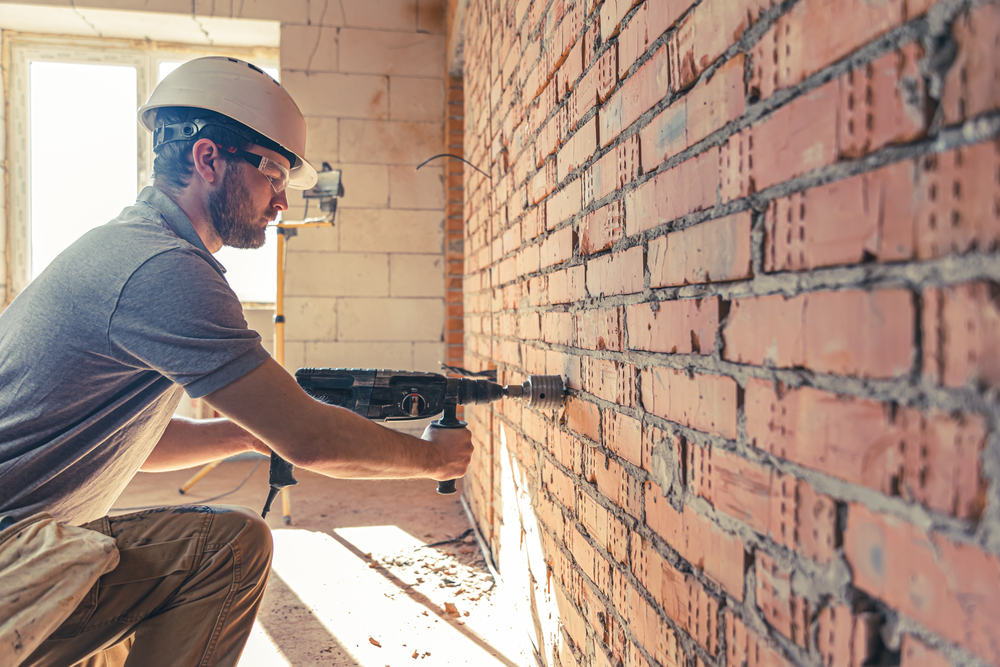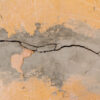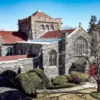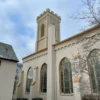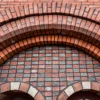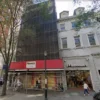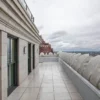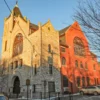Brick structures are unique in our architectural heritage, especially in historic cities like Philadelphia. Brick repointing is a specialized process vital for maintaining these timeless edifices. Repointing involves removing deteriorated mortar from the joints of a brick wall and replacing it with new mortar. This not only ensures the longevity of the building but also preserves its historical integrity. Over time, mortar can erode due to weathering and environmental factors, leading to structural and aesthetic issues. Repointing brick is not just about applying new mortar; it’s an art that requires skill and precision, blending the old with the new while respecting the building’s original design and character.
Premier Building Restoration: Your Partner in Preserving History
At Premier Building Restoration, we understand the value of historic masonry and the importance of preserving it with the utmost care and expertise. Our team specializes in historic masonry restoration, offering unparalleled services in Philadelphia and beyond. We approach each project with deep respect for the building’s history, ensuring that every repointing and repair job is performed with precision and attention to detail. Our commitment to quality and preservation makes us the ideal partner for property owners, historic preservationists, and businesses seeking to maintain the beauty and integrity of their historic brick structures.
Understanding the Basics of Brickwork and Mortar
Understanding and maintaining this brickwork is especially important in areas like Philadelphia, with its rich history and abundance of historic buildings. Property owners, preservationists, and businesses must pay attention to the condition of their brick structures to preserve their heritage and ensure safety. When mortar deteriorates, it’s not just the appearance of the building that suffers; the bricks themselves can become loose, leading to potential hazards. This is where repointing comes into play.
Repointing involves carefully removing the old, damaged mortar between the bricks and replacing it with new mortar. This process requires skill and knowledge, as the new mortar must match the original in color, composition, and strength. Using the wrong type of mortar can look out of place and cause further damage to the bricks. For historic buildings, it’s crucial to use materials compatible with the original construction to maintain the building’s historical integrity.
Proper repointing restores the brickwork’s appearance and structural stability, extending the building’s life and preserving its historical value. It’s a delicate process that requires a professional touch, particularly in historic masonry restoration. By understanding the basics of brickwork and mortar, property owners and preservationists in the Philadelphia area can better appreciate the importance of regular maintenance and the role of repointing in preserving their historic structures.
Signs That Your Brickwork Needs Repointing
Repointing is not just about improving the appearance of a building; it’s a necessary maintenance task that ensures the longevity and safety of brick structures. For property owners and historic preservationists in the Philadelphia area, recognizing the signs of mortar deterioration is key to timely and effective restoration.
One of the first signs to look for is visible damage to the mortar. This can include cracking, crumbling, or missing pieces. These issues are often more than just superficial. They can indicate deeper problems like structural weakness or water infiltration. Another sign is a change in the texture or color of the mortar. If the mortar looks significantly different from when it was first applied, it may be time for repointing.
Weather plays a significant role in the wear and tear of brickwork. In Philadelphia, the changing seasons bring a variety of weather conditions that can affect mortar. Cold winters can cause mortar to freeze and thaw, leading to cracks and weakening. Similarly, heavy rains can erode mortar over time. Regular inspections, especially after extreme weather, can help catch these issues early.
Water infiltration is another critical sign. If water seeps into brickwork, it can cause external damage and internal issues like mold or dampness. This is particularly concerning for older buildings, where prolonged water exposure can lead to significant structural damage. Loose or shifting bricks are a telltale sign that the mortar is failing, and repointing is necessary. This can pose a safety risk, as loose bricks can fall and cause injury or further damage to the property.
The Repointing Process
The process starts with a thorough inspection of the brickwork. This involves identifying areas where the mortar has deteriorated and determining the extent of the damage. It’s important to assess the type of mortar originally used, as this will guide the selection of the replacement mortar. The mortar must match the original in terms of composition, color, and texture to ensure compatibility and maintain the aesthetic of the building.
Once the assessment is complete, the old mortar is carefully removed. This is done using tools like chisels and grinders, taking care not to damage the bricks. The removal depth is crucial; typically, it should be twice the width of the mortar joint to ensure a strong bond for the new mortar. After removing the old mortar, the joints are cleaned to remove dust or debris. This step is vital for ensuring that the new mortar adheres appropriately.
Next, the new mortar is prepared. The mixture should closely match the original mortar. This often involves a trial-and-error process to get the right color and texture. The new mortar is then applied to the joints using a pointing trowel. The technique used for applying the mortar is important for achieving a finish that resembles the original work. Once the mortar is in place, it’s shaped to match the existing joints. This might involve using special tools or techniques, depending on the style of the brickwork.
Finally, the mortar is allowed to cure. This critical phase is where the mortar hardens and bonds with the bricks. The curing time can vary based on the type of mortar used and the weather conditions. The mortar must be protected from extreme weather like heavy rain or freezing temperatures to ensure it sets correctly during this time.
The repointing process combines art and science, requiring a keen eye and skilled hands. It’s essential for maintaining the structural integrity and aesthetic appeal of brick buildings, particularly those with historical significance. Proper repointing can breathe new life into old buildings, preserving them for future generations to appreciate.
Tools and Equipment Necessary for Repointing
The tools used can make a significant difference in the quality and efficiency of the work. The first set of tools is for removing the old mortar. This includes chisels of various sizes, which carefully chip away the deteriorating mortar without damaging the bricks. A grinder with a diamond-tipped blade may be used for larger or more challenging projects. However, this requires expertise to protect the bricks. A hammer or a mallet is used alongside chisels for precise control.
After removing the old mortar, the joints need to be cleaned thoroughly. For this, brushes of various sizes are used to remove loose debris and dust. A vacuum cleaner may also ensure the joints are clean and ready for the new mortar.
Preparing the new mortar requires a mixing trowel and a bucket. The consistency of the mortar is crucial, so having the right mixing tools helps achieve the correct balance. The mortar mix must be compatible with the original mortar in terms of strength, color, and thermal expansion properties.
For applying the mortar, a pointing trowel is essential. This tool allows for precise application of the mortar into the joints. Depending on the size and shape of the joints, different sizes or shapes of trowels may be needed. A jointer tool shapes the mortar once it’s in the joint, ensuring it matches the existing style and provides a seamless look.
Protective gear is also important. Safety glasses, gloves, and a dust mask are necessary to protect against flying debris and dust. For larger projects, scaffolding or ladders might be needed to reach higher areas safely.
Finally, for the curing process, materials like burlap or plastic sheeting may be used to protect the new mortar from weather elements during the curing period.
Professional Repointing Vs. DIY: Pros and Cons
Professional repointing offers several advantages. Firstly, professionals possess the necessary skills and experience. They understand the nuances of different types of brickwork and mortar, ensuring that the repointing is done correctly. Professionals also have access to the right tools and materials, which is crucial for a job that requires precision and care. This expertise is significant for historic buildings, where maintaining the original look and integrity of the structure is essential. Moreover, professional work usually comes with a guarantee, providing peace of mind regarding the longevity and quality of the repairs.
However, professional repointing can be more expensive than DIY. The cost includes labor, materials, and potentially other expenses like scaffolding. This cost might be prohibitive for some, leading them to consider DIY as an alternative.
DIY repointing has the obvious advantage of being more cost-effective. It can be a rewarding experience, giving property owners a hands-on role in the maintenance of their buildings. For smaller projects or minor repairs, DIY might be a feasible option.
But the downsides of DIY are significant. Without the proper skills, tools, and knowledge, there’s a high risk of doing more harm than good. Incorrectly mixed mortar or improperly filled joints can lead to structural issues and may require costly corrections later on. There’s also the time commitment to consider. Repointing is time-consuming, and doing it yourself means dedicating significant time and effort.
Refresh Your Historic Property with Premier Building Restoration
Are you looking to restore the grandeur of your historic property? Premier Building Restoration is here to assist. We offer a comprehensive range of services, including repointing brick and brick restoration. Our expert team delivers the highest quality artistry, ensuring that your building stands the test of time and maintains its historical significance and beauty. Contact us today to preserve your piece of history with the care and expertise it deserves.



